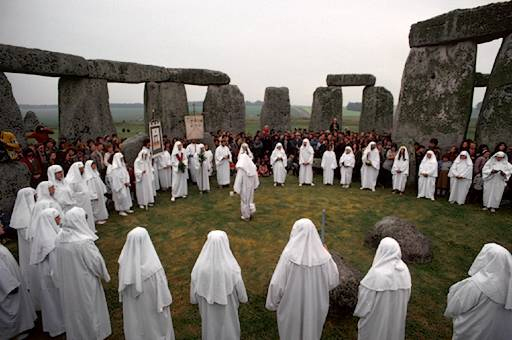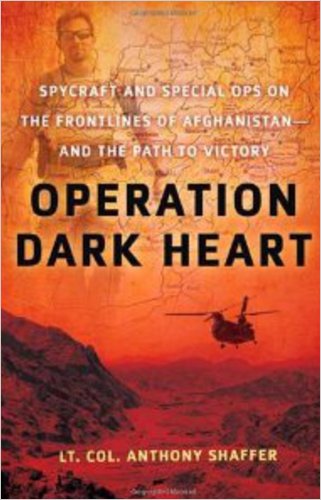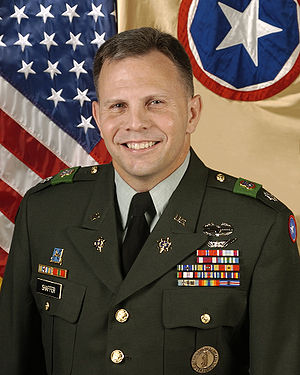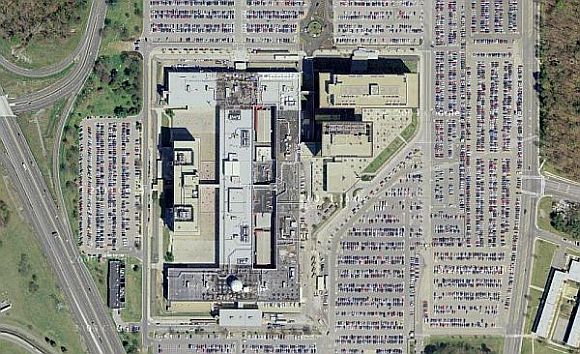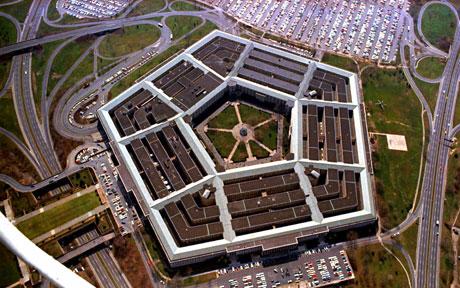Oktober 2010
By John Assaraf
In 1633, an aging Italian astronomer named Galileo Galilei was taken before the Roman Inquisition, tried, convicted of heresy, and sentenced to spend the rest of his life in prison.
Galileo’s crime? He endorsed the idea, proposed a century earlier by the great Catholic astronomer Nicolaus Copernicus, that the earth is not the center of the solar system. In fact, said Galileo, it is the other way around: The sun sits at the center, and the earth is simply one of a handful of planets that revolve around it.
This idea was judged as being diametrically opposed to the position taken by Holy Scripture. Galileo was forced to publicly recant his views, and his book containing the offending idea, Dialogue Concerning the Two Chief World Systems, was banned. The old man’s sentence was later commuted to house arrest, and he lived out the rest of his days confined to his villa outside Florence, where he eventually went blind.
Still, Galileo’s views persisted, and the meticulous experiments and mathematical models he used in his search to understand nature set the stage for all the developments of modern science that followed. Three centuries later, a German physicist named Albert Einstein called him “the father of modern science.”
From Galileo’s time onward, scientists’ precise observations contributed to a picture of the world that looked very much like a massive piece of mechanical clockwork; they had little practical use for such ideas as soul, spirit, or consciousness.
The French philosopher and mathematician René Descartes, a contemporary of Galileo’s who is today regarded as “the father of modern philosophy,” declared that the best way to understand how the world works would be to divide existence into two parts: the objective or material world, governed by the principles of science, and the subjective world of the mind and the soul, which would be the province of the church.
Descartes is especially famous for the statement I think, therefore I am. But the truth is, the think part of that declaration puzzled Descartes, much as it has puzzled scientists for centuries since. Just how is it that we think? Where do our thoughts come from? How do the bits of physical matter that constitute our brains generate consciousness? The answers to those questions open up a tremendous new world of possibility for what we can achieve in our lives, and they form a central part of The Answer.
A World Inside the Atom
In the generations following Galileo and Descartes, Sir Isaac Newton took the idea of nature-as-machine much further, detailing the precise laws that govern how that machine operates. All of classical physics, and in fact, all of modern science, has been built upon the foundation created by Newton. His laws of motion made possible the advance of modern technology, from simple steam engines to the space probes that have analyzed soil samples on Mars.
But scientists eventually reached the limits of the Newtonian worldview. As their tools grew more sophisticated, their explorations of the physical world took them deep into the heart of the atom, where the nature of reality proved to be something quite different from anything Descartes or Newton ever imagined.
At the dawn of the twentieth century, scientists began looking into the world within the atomic nucleus, and they were shocked to discover that on the subatomic level, the physical world did not behave at all the way Newton said it should. In fact, the “atom” itself turned out to be a sort of illusion: The closer scientists looked, the less it really appeared to be there.
And when our vision of the atom fractured, the foundation of classical physics fractured along with it. Our view of how the world works was in for a radical transformation.
Everything Is Energy
When we say the name Albert Einstein, what comes to mind? Perhaps you think of his wild mane of white hair, or that famous picture of the distinguished physicist sticking out his tongue. Or maybe you think simply, “Genius.” But whatever picture you have, you will also probably come up with “E=MC2.”
Why on earth would a mathematical equation for a sophisticated theory be so famous that even nonscientists recognize it immediately? Because with that simple equation, “Energy equals mass times the speed of light squared,” Einstein shattered centuries of thinking and radically altered our view of how the world works.
One reason Einstein’s idea was so transformative was that for the first time ever, it described how energy and matter are not only related, but can be transformed back and forth into each other. Now the elegant, clear-cut world of classical, Newtonian physics would be forced to move over and make room for the fuzzy, strange, nearly unimaginable world of quantum physics.
Quantum physics is the study of how the world works on the smallest scale, at a level far smaller than the atom. And as scientists studied the nature of reality on a smaller and smaller scale, something strange began to happen: The deeper we went into reality, the more it seemed to dissolve from view. The search for the smallest known particle of matter had instead turned up distinct yet elusive little packets of energy, which physicists called quanta.
The Einstein breakthrough comes down to this: Everything is energy. A rock, a planet, a glass of water, your hand, everything you can touch, taste, or smell - it’s all made of molecules, which are made of atoms, which are made of protons and electrons and neutrons, which are made of nothing but vibrating packets of energy.
This is where quantum physics intersects with what I found inside that cardboard box. What physicists found has everything to do with how you are going to create the life of your dreams by building your dream business. For once we know that everything is energy - that there is no absolute distinction between matter and energy - then the boundaries between the physical world and the world of our thoughts start to disappear as well.
Reading the Mind of God
In the decades that followed Einstein’s theory of relativity, the new quantum physics began to reveal some very strange things. The tiny packets of energy known as quanta exhibited some very peculiar behaviors, including an unexplainable ability to influence one another, a property called entanglement.
In his book Science and the Akashic Field, physicist Ervin Laszlo describes a series of experiments conducted by lie detector expert Cleve Backster. Backster took some white blood cells from the mouths of his subjects and cultured them in a test tube. He then moved the cultures to distant locations, more than seven miles away. He attached lie detectors to the cultures and then performed a series of experiments on his subjects.
In one of his tests, he showed his subject a television program depicting the Japanese attack on Pearl Harbor in 1941. This man was a former navy gunner who had actually been present at Pearl Harbor during the attack. When the face of a navy gunner appeared on the screen, the man’s face betrayed an emotional reaction—and at that precise moment, the lie detector’s needle seven and a half miles away jumped, exactly as it would have had it been attached to the man himself, and not just to a test tube of his cultured white blood cells miles away.
How is such a thing possible? In the language of quantum physics, the particles of the gunner’s body are still connected or “entangled” with one another, and no matter how far apart they are separated in space, they will continue to influence one another. In fact, this effect appears to occur at speeds faster than the speed of light, which violates one of Einstein’s basic rules.
Scientists dubbed this mind-boggling capacity for instantaneous interconnection nonlocality. Einstein had a somewhat less technical term for it. He called it spooky actionat a distance.
A Bizarre Discovery: Thought Influences Matter
Within twenty years of Einstein’s radical work, another revolution in worldview occurred, just as cataclysmic as Einstein’s. It started with two of the early pioneers of the quantum world, the Danish physicist Niels Bohr and his protégé Werner Heisenberg.
Bohr and Heisenberg studied the puzzling behaviors of these tiny subatomic particles and recognized that once you look deep within the heart of atoms, these “indivisible particles” are something like tiny packets of possibility.
Each subatomic particle appeared to exist not as a solid, stable “thing,” but as the potential of any one of its various possible selves. Heisenberg’s uncertainty principle stated that it was not possible to measure all of a subatomic particle’s properties at the same time. For example, if you record information about the location of a proton, you cannot pin down its speed or trajectory; if you figure out its speed, now its precise location eludes you.
Bohr and Heisenberg’s work suggested that at its most basic level, physical matter isn’t exactly anything yet. At the subatomic scale, according to this new understanding, reality was made not of solid substance but of fields of potentiality - more like a set of possible sketches or ideas of a thing than the thing itself. A particle would take on the specific character of a material “thing” only when it was measured or observed.
In fact, even more bizarre, it was soon found that the mere intention of measuring particles, even without carrying out the actual act itself, would still affect the particles in question!
Suddenly subjectivity - the action of consciousness upon a piece of “matter” - had become an essential component in the very nature of reality.
The Zero-Point Field
As scientists continued pursuing their explorations on staggeringly small scales, they eventually found themselves staring at something truly confounding. They termed it the zero-point field (ZPF), because at this most infinitesimal of levels, some sort of force appears to be present even at a temperature of absolute zero, when all known forms of energy vanish.
Here, beneath the level of energy itself, exists a still more basic level. The field at this level is not exactly “energy” anymore, nor is it a field of empty space. It is best described, physicists realized, as a field of information.
To put it another way, the undifferentiated ocean out of which energy arises appears to be a sea of pure consciousness, from which matter emerges in clustered localities here and there. Consciousness is what the universe is made of; matter and energy are just two of the forms that consciousness takes. Ervin Laszlo calls this field that underlies and connects all things the A-field, in deference to the ancient Vedic concept of the Akashic record, a nonphysical repository of all knowledge in the universe, including all human experience.
The psychologist Carl Jung called it the collective unconscious. It has been intuited and described for thousands of years and in a multitude of terms and images throughout human history. Only in the last few decades has science caught up to what we always sensed but could never fully explain.
Says Laszlo: “The ancients knew that space is not empty; it is the origin and memory of all things that exist and have ever existed. . . .[This insight] is now being rediscovered at the cutting edge of the sciences [and is emerging] as a main pillar of the scientific world’s picture of the twenty-first century. This will profoundly change our concept of ourselves and of the world.”
In fact, it has already profoundly changed our picture of ourselves and our world—and it will radically change how you approach your life and your business.
Thought Creates Everything
So what are we saying here, that everything that is, is made of thought? That thought creates the physical world? Yes, that is exactly what we’re saying.
Your thoughts not only matter, they create matter. Thought is where everything comes from. And your thoughts are where your business comes from.
In the chapters that follow, we’re going to walk through the process, step by step, of building your dream business by first harnessing the most powerful force in the universe: your beliefs.
The Most Powerful Force In The Universe
If the idea that the universe is made of thought seems amazing, here is the truly amazing thing about it: The scale of power we’re talking about here is staggering beyond comprehension.
The universe appears to be structured as a series of layers or levels, much like an onion or Russian nesting dolls: Inside of organisms, we find cells; inside cells, molecules, then “indivisible” atoms, then electrons and protons, then quarks, bosons, mesons, photons, leptons . . . and the smaller the world, the greater the amount of force we find wrapped inside it.
The deeper in nature you go, the more dynamic nature becomes. In other words, the more fundamental the level to which you penetrate, the greater the power you’ll find.
For example, chemical power, the force of chemical interactions, operates at the level of molecules and atoms. Nuclear power operates at the level of the atomic nucleus, about a million times smaller - and it is a million times more powerful. Yet even the nuclear level pales in comparison to the deeper levels today’s quantum physics is exploring. According to Laszlo, the zero-point field has an energy density of 1094 ergs per cubic centimeter - that’s ten thousand billion, billion, billion, billion times more energy in a single cubic centimeter of “empty space” than you have in all the matter in the known universe.
And that’s just one cc of empty space. Imagine what you’d have in a quart.
How Quantum Science Helps You Build Your Dream Business
In 1902, two years after the physicist Max Planck first coined the term quantum to describe the core reality of light, a young British writer named James Allen penned a little book entitled As a Man Thinketh, which drew its title and its message from the biblical verse “As a man thinketh in his heart, so is he.”
At the time, few would have associated the two men and their work, but with the hindsight of a century’s discoveries, we can now see the connection. While scientists spent the rest of the century pursuing the horizon set by pioneers such as Planck, Einstein, Bohr, and Heisenberg, which would ultimately lead to the quantum vacuum, philosophers like Napoleon Hill, Earl Nightingale, and Bob Proctor worked to articulate its application to the practical world of human accomplishment.
This idea, that our thoughts have a direct, causal impact on our reality, has been observed, but it always seemed like something that rational people couldn’t buy into, an idea that created more questions than answers. Now science has given us that set of answers.
Remember the mind-boggling amount of power in that cubic centimeter of “empty space,” or consciousness? When Victor Hugo said, “There is nothing more powerful than an idea whose time has come,” we now know that this was more than a metaphor. He may not have fully realized it at the time, but he was giving us a literal description of how reality works.
The idea precedes the thing.
That is at the heart of how my dream house showed up, as well as every business I’ve built, and the same thing happens to every businessperson who has a vision and applies these strategies and tactics. It started as a picture, an idea in my mind, and before I knew what had happened, I was living in it.
Science tells us that underlying what we know as the world is a field of pure consciousness, billions upon billions of times more powerful than any measurable energy, and that this field of absolute consciousness knows everything that happens, anywhere and everywhere in the universe, instantaneously and with absolute accuracy.
This is not so different from the kind of descriptions people have given for millennia in their efforts to grasp the ultimate nature of our universal source, what some of us call God. Whatever you call it, the picture that emerges is of a world bounded by an infinitely large, omnipotent, omniscient intelligence, which lies behind everything in the phenomenal world as its source, author, and ultimate destination.
This is the dream world we live in, you and I, and it is the clay from which you will shape and give life to your dream business.
Source: http://www.mindpowernews.com
